Supply Chain’s Fight Against Cancer
New alignment and new projects highlight New York cancer center’s commitment to end cancer for life.

New alignment and new projects highlight New York cancer center’s commitment to end cancer for life.

When the ultrasonic cleaner is supplying sufficient energy and condi�ons are correct, SonoCheck™ will change color. Problems such as insufficient energy, overloading, water level, improper temperature and degassing will increase the �me needed for the color change. In the case of major problems the SonoCheck™ will not change color at all.
Reveal the hidden areas of instruments with the TOSI® washer test, the easy to use blood soil device that directly correlates to the cleaning challenge of surgical instruments. TOSI® is the first device to provide a consistent, repeatable, and reliable method for evalua�ng the cleaning effec�veness of the automated instrument washer.
The LumCheck™ is designed as an independent check on the cleaning performance of pulse-flow lumen washers. Embedded on the stainless steel plate is a specially formulated blood soil which includes the toughest components of blood to clean.

This kit simulates a flexible endoscope channel to challenge the cleaning efficiency of endoscope washers with channel irriga�on apparatus. A clear flexible tube is a�ached to a lumen device with a test coupon placed inside; the en�re device is hooked up to the irriga�on port of the endoscope washer.
Go beyond what you can see with all-in-one detec�on kits for blood or protein residue. HemoCheck™ is simple to interpret and indicates blood residue down to 0.1μg. The ProChek-II™ measures for residual protein on surfaces down to 0.1μg.



2 A Foundation of Care Community health centers play an important role in addressing the nation’s primary care gap.
8 Combatting Long COVID
The U.S. Department of Health and Human Services granted funding to clinics that assist patients with the treatment of Long COVID.
10 Supply Chain’s Fight Against Cancer
New alignment and new projects highlight New York cancer center’s commitment to end cancer for life.
The Journal of Healthcare Contracting is published bi-monthly by Share Moving Media 350 Town Center Ave, Ste. 201 Suwanee, GA 30024 Phone: 770/263-5262
FAX: 770/236-8023 e-mail: info@jhconline.com www.jhconline.com
18 Expanding the Healthcare Sector’s Talent Pool
Futuro Health’s education to career programs address industry’s allied health workforce shortages.

26 Back to School ... and Group A strep
Forecasting how step A may affect patients — and healthcare providers — this respiratory season.
32 Transportation Barriers to Healthcare Access
Across the nation, lack of reliable transportation is a barrier to accessing needed healthcare services.
PUBLISHER John Pritchard jpritchard@sharemovingmedia.com
DIRECTOR OF BUSINESS DEVELOPMENT Anna McCormick amccormick@sharemovingmedia.com
EDITOR Graham Garrison ggarrison@sharemovingmedia.com
SENIOR EDITOR Daniel Beaird dbeaird@sharemovingmedia.com
ART DIRECTOR Brent Cashman bcashman@sharemovingmedia.com
CIRCULATION Laura Gantert lgantert@sharemovingmedia.com
The Journal of Healthcare Contracting (ISSN 1548-4165) is published bi-monthly by Share Moving Media, 350 Town Center Ave, Ste 201, Suwanee, GA 30024. Copyright 2023 by Share Moving Media All rights reserved.
Please note: The acceptance of advertising or products mentioned by contributing authors does not constitute endorsement by the publisher. Publisher cannot accept responsibility for the correctness of an opinion expressed by contributing authors.
 BY JENNA HUGHES
BY JENNA HUGHES
Medicine, “primary care is the only healthcare component where an increased supply is associated with better population health and more equitable outcomes.” Primary healthcare is integral to national public health and in preventing disease transmission. The NACHC advocates for primary healthcare services to be a nationally recognized health priority.
“The primary care gap is deepening in underserved communities across our nation due to a number of trending factors including rural hospital closures, a shortage of workforce that was exacerbated by COVID, increased medical specialization and an uneven distribution of providers across the U.S.,” said Amy Simmons Farber, AVP, Media Relations for NACHC.
Americans nationwide have experienced increased difficulty accessing affordable primary healthcare. Over 100 million Americans face barriers to accessing primary care, according to the National Association of Community Health Centers (NACHC). The gap in access to primary healthcare results in serious public health threats, “leaving nearly one-third of the population vulnerable to preventable chronic diseases and emerging threats like COVID-19 and influenza,” according to the NACHC.
A patient’s ability to access primary healthcare has seen these challenges along with a doubling of patient volume since 2014. Access to primary care services is an essential healthcare need, especially in underserved communities.
Primary care providers diagnose and treat infectious diseases in vulnerable populations, and the need for their services has been intensified by the COVID-19 pandemic. Primary healthcare providers
are often the first line of healthcare defense, providing patients with vaccinations, treatments, and health education. According to NACHC and the National Academy of Sciences, Engineering, and
“The COVID-19 pandemic has shown us how a strong primary care foundation is essential to good public health and health equity. When one person goes without access to affordable preventive healthcare, we all feel the impact in some measure, whether it is higher healthcare costs or a crowded ER waiting room because there are patients who have no other place to go for a flu shot or diabetes treatment,” said Farber.
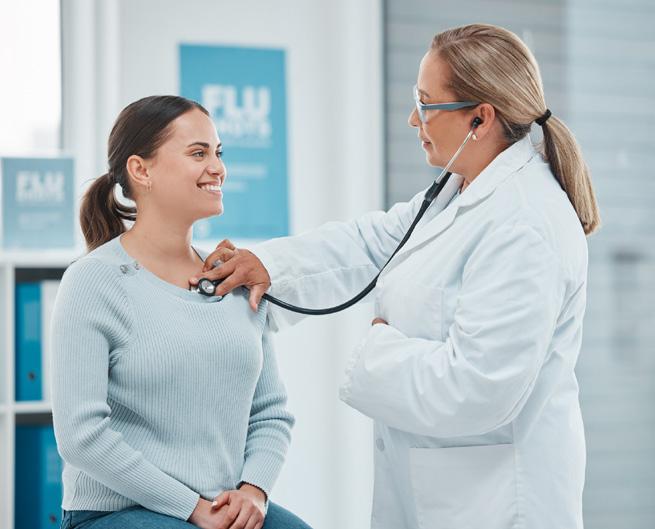




















Community health centers are federally funded clinics that provide affordable healthcare to underserved communities. Health centers reduce barriers such as cost, lack of insurance, distance, and language for patients who would otherwise be unlikely or unable to access healthcare.
The National Association of Community Health Centers (NACHC) is an advocacy organization founded to promote patient-centered and accessible healthcare. The organization promotes healthcare that is culturally and linguistically competent and community directed to ensure more Americans have access to needed healthcare services. Health centers provide patients with primary medical care, dental, behavioral health, pharmacy access, and preventative services. “Primary care providers can treat the common cold, ensure healthy childhood development, prevent future illness, manage chronic conditions, and connect patients to specialty services. Having a usual source of primary care is associated with decreased emergency department use and lower health care costs throughout the lifetime,” according to Farber. Medically disenfranchised individuals are often unable to access primary care due to cost barriers. According to the NACHC, over 90% of all health center patients are low-income, and 67% have an income below the federal poverty level. Low-income patients are vulnerable to chronic diseases that go undiagnosed and are therefore at a higher risk of spreading infectious diseases to others. To close the primary healthcare gap, social drivers that cause poor health such as diet, nutrition, mental illness, and homelessness must also be addressed.
“Health centers create jobs, generate economic impact, and bring positive
health outcomes in the most challenged populations. Health centers’ formula for success is not just to prevent illness, but to reach beyond the conventional exam room to address the environmental factors or social drivers that make people sick,” according to Farber.
the NACHC has sought to improve health center networks through strategic investments and national advocacy. The NACHC has been involved in initiatives that help fund education programs, scholarships, and loan repayment programs that encourage practitioners to work in primary care.
Community health centers are the largest primary care network in the country, NACHC states, providing services to millions of Americans who would otherwise forgo healthcare. According to the NACHC, health center patients who used enabling services had 1.9 more health center visits in the past year, and a 12 percentage-point higher likelihood of getting a routine checkup. Health center networks increase access to primary healthcare, reduce health disparities, lower patient costs, and improve community health.
“Health centers play a vital role in closing primary care gaps in underserved communities. The NACHC primary care study found that without health centers, 15 million more patients would be at risk of not having a usual source of primary care. Health centers provide essential services to these patients who otherwise might not have access to preventive care or treatment for basic health needs,” according to Farber.
Many Americans rely on community health centers for their medical care. As challenges to healthcare access continue nationwide,
Initiatives also include advocacy for increased funding of health centers and expanding provider networks to meet demand. Through national advocacy, the NACHC garners financial resources to support health centers with the net increase of medically disenfranchised patients.
“NACHC is very focused on ensuring that health centers can continue to expand their reach with targeted federal investment in the growth of the program as well as sustainable funding to train, recruit and retain the primary care workforce through important programs like the National Health Service Corps and Teaching Health Centers.”
Programs such as the National Health Service Corps and Teaching Health Centers support primary medical, dental, and behavioral healthcare providers. The National Health Service Corps assists students through scholarships and loan repayment programs. The Teaching Health Centers ensure low-income communities have access to primary healthcare. NACHC’s involvement in these programs increases a patient’s current and future ability to access quality healthcare by addressing primary care provider shortages.
“The NACHC primary care study found that without health centers, 15 million more patients would be at risk of not having a usual source of primary care.”
In this post-pandemic world, uncertainty is the new normal. Being resilient and ever-ready have moved from aspirational to table stakes. And now — more than ever — you need a reliable partner to support you and your patients every step of the way. That’s why we’re redefining supply chain expectations.
In this post-pandemic world, uncertainty is the new normal. Being resilient and ever-ready have moved from aspirational to table stakes. And now — more than ever — you need a reliable partner to support you and your patients every step of the way. That’s why we’re redefining supply chain expectations.
From physician offices to surgery centers and patients’ homes, we tailor our breadth of offerings to create a unique roadmap that helps you build a resilient, high-performing supply chain.
From physician offices to surgery centers and patients’ homes, we tailor our breadth of offerings to create a unique roadmap that helps you build a resilient, high-performing supply chain.
We’re relentless about building trusted partnerships that make supply chain excellence and better health possible.
We’re relentless about building trusted partnerships that make supply chain excellence and better health possible.




We build customized solutions to help you improve operational, financial and clinical outcomes
We build customized solutions to help you improve operational, financial and clinical outcomes — efficiently, effectively and on budget — so you can deliver better patient care. Raising
— efficiently, effectively and on budget — so you can deliver better patient care. Raising
mms.mckesson.com/HealthSystems
mms.mckesson.com/HealthSystems
We’re ready for the future — today. From global distribution to logistics services, we help you improve operational efficiencies across hundreds of micro supply chains, so you’re ready to take on any challenge.
We’re ready for the future — today. From global distribution to logistics services, we help you improve operational efficiencies across hundreds of micro supply chains, so you’re ready to take on any challenge.


Medical manufacturers, distributors, and suppliers all impact the natural environment as a result of their operations. Sustainable practices within the medical industry not only protect the environment, but also keep companies in step with their competitors. Healthcare industry leaders are increasingly evaluating their companies’ environmental impact and making the necessary business adjustments to effectively implement sustainable change.
In a recent podcast, Artha Salgado, Director of Environmental Sustainability at Ansell, discussed how stakeholders can ignite a mindset of change in the medical industry toward a sustainable future.
Ansell is a global safety solutions organization that specializes in personal protective equipment for the healthcare industry. Ansell prioritizes environmental sustainability and strives to integrate environmentally beneficial practices throughout company operations. The manufacturer also focuses sustainability initiatives on overall energy and emissions, water stewardship, zero waste in manufacturing facilities, biodiversity impacts, and sustainable packaging, with a commitment to achieve net-zero carbon emissions and source 100% of electricity from renewable sources by 2040.
Waste produced as a result of medical industry operations have a substantial impact on the environment. Implementing waste reduction tactics within the industry starts at the source. Employees at Ansell are engaged in a culture and mindset of sustainability throughout all steps of the
manufacturing process. Ansell aims to reduce paper and plastic packaging, ensure that all paper-based packaging is made with recycled content, and make 100% of packaging material recyclable, reusable, or compostable by 2026.

“We focus quite significantly on segregation and source for waste reduction. We try to minimize the material that is being used, thereby also minimizing shipping volumes. We make sure that more packaging material or more product is going into containers. When the packaging comes to our end users or our customers, we make sure that we are giving them the most sustainable packaging options available to optimize their utilization,” said Salgado.
Surgical material manufacturing can be more sustainable through a focus on minimizing material used, decreasing shipping volumes, and using recycled packaging options. Also, if a company prioritizes sustainability initiatives on an overall scale, such as through efficient energy use, waste reduction, and sustainable packaging, then in turn, all individual medical products are manufactured with a sustainability focus.
“If we were to shift all our electricity to renewables in one of our manufacturing facilities, the environmental impact of the product that is manufactured in that facility becomes small automatically. And it’s not just one product line, it’s everything that is manufactured there,” said Salgado.
The healthcare industry has become increasingly interdependent and connected. Ansell’s sustainability efforts have resounding impacts throughout the med-surg industry, and their partners have also begun reporting and disclosing encouraging emissions, water, and waste reduction efforts.
“As an organization, we can directly influence what happens during the manufacturing phase, then we can influence what happens upstream in terms of the raw materials, and then we can engage with customers and end users when it comes to an end-of-life part of the process. Ansell applies these environmental commitments to all our manufacturing sites, irrespective of whether it is surgical, industrial or life sciences,” said Salgado.


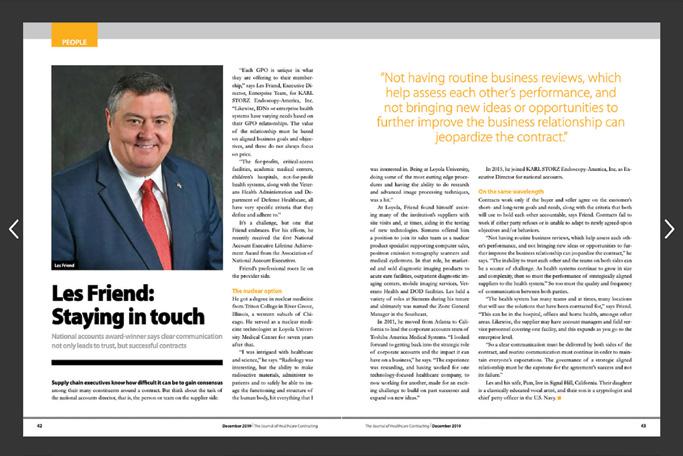
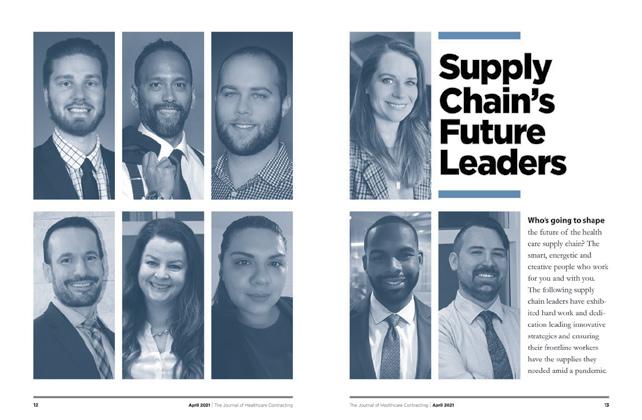
The U.S. Department of Health and Human Services granted funding to clinics that assist patients with the treatment of Long COVID.
As the nation moves on from the COVID-19 pandemic, some individuals are continuing to experience the debilitating effects of being diagnosed with the disease.
Some individuals who are recover from COVID-19 can go on to develop long-term effects after an initial infection. The ongoing symptoms a patient experiences after infection are referred to as “Long COVID.” Individuals with Long COVID can experience a wide-variety of persistent COVID-like symptoms such as fatigue, cough, shortness of breath, body aches, etc. Long COVID may not affect everyone the same way, and it can last weeks, months or years after an initial COVID infection. Long COVID can also lead to the development of new conditions or disability.
“While estimates vary, up to onethird of people with COVID-19 infections may experience Long COVID,” according to a recent press release from the Agency for Healthcare Research and Quality (AHRQ).
The Long COVID healthcare crisis has led to a necessity for health systems to be able to treat the disease. New funding for clinics that care for people with Long COVID, provided by The U.S. Department of Health and Human Services

(HHS), will “expand access to comprehensive, coordinated, and person-centered care for people with Long COVID,” according to the AHRQ press release. The grant funding will help provide clinics with the resources to treat Long COVID, especially clinics that treat underserved, rural, vulnerable, or minority populations. These demographic groups are often unable to access the specialized treatments needed to address the varied and ongoing symptoms of Long COVID.
Health organizations that are eligible include clinics that are specifically able to address the symptoms associated with Long COVID. The clinic must also offer other comprehensive Long COVID
healthcare services, such as screening for disease outcomes, rehabilitation, and targeted specialist referrals.
Clinics that receive funding must also assess patients’ social and behavioral needs and personal circumstances when making health-related decisions. Clinics must additionally partner with communitybased organizations that have a focus on assisting people with Long COVID.
“The grants will help provide resources and services to communities disproportionately impacted by Long COVID, while helping educate and provide information into best practices for Long COVID management,” according to AHRQ Director Dr. Robert Otto Valdez.
While each patient journey is unique, medical diagnostics play a crucial role in delivering data and actionable insights. At QuidelOrtho, we pride ourselves in providing these critical answers early and often in the healthcare continuum. See
at QuidelOrtho.com

New alignment and new projects highlight New York cancer center’s commitment to end cancer for life.
Kreg Koford joined Memorial Sloan Kettering Cancer Center in 2018 as Senior Vice President of Supply Chain and Hospital Operations. After being responsible for $2.2 billion of non-labor spend at Intermountain Healthcare in Salt Lake City, he was tasked with bringing a bold vision and developing new opportunities in existing relationships to transform how the cancer center buys, distributes, and uses resources.
Founded in 1884 and located in the heart of New York City, Memorial Sloan Kettering’s (MSK) mission is to end cancer for life. That focuses its strategy and its three pillars of education, clinical care, and research to create the best possible outcome for the patient, according to Koford.
He’s been building out teams, processes, and technology over the past five years, and COVID-19 hit just after onboarding his leadership team in 2019. “We’ve been on a journey with a pandemic right in the middle of it,” he said.
When Koford first arrived at MSK, he retained Lisa Lieberman, the interim supply chain leader, as the Senior Director Operations, to maintain and learn from her 25-years’ experience in working within the MSK organization. Lieberman drove the supply chain operational planning and goal setting efforts, as well as leading the supply chain transformation.
Koford enlisted Aaron Tappan as Senior Director of Materials Management. Tappan previously worked at Bloomberg for over 20 years in New York City and understood the density of distribution and the complexities of a city environment. “We brought Aaron on intentionally from outside of the industry to revamp our materials management group,” Koford said. “He had the right leadership skills to build a team around.”
Koford then recruited another key hire, Mohamed Guiro from Intermountain, as Director of Strategic Sourcing with a background in pharmacy. MSK estimates about $1.5 billion of its $2.5 billion spend is in pharmaceuticals. “Mohamed managed the Pharmacy portfolio at Intermountain and has a background in supply chain expertise to understand the rigor and the alignment needed in all clinical and non-clinical areas of sourcing and contracting,” Koford said.
After Lieberman transitioned to a critical internal position, a vital leadership role needed to be filled. In stepped Jamie Green at a pivotal time in the supply chain’s transformation, taking over as Senior Director of Operations for informatics, purchasing, and supplier diversity. Green came from CommonSpirit Health and was recruited through a national search. “We’re really at a time where we have depth and breadth of experience, and seasoned leaders to help us mature every aspect of the supply chain,” Koford concluded about his team.
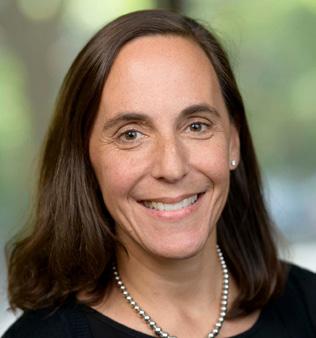
The pandemic has improved supply chain’s impact within health systems. Today, it’s viewed as more strategic by healthcare executives and is recognized for being essential in the day-to-day functioning of a health system.
Supply chain stands to assume an even more strategic role going forward for many health systems, including at MSK.
Koford says they recently finished an 18-month project that centralized all of MSK’s logistics associates to its materials management group. “It’s complete and it has impacted the operating model for non-clinical, ambulatory care, and hospital sites,” he said.


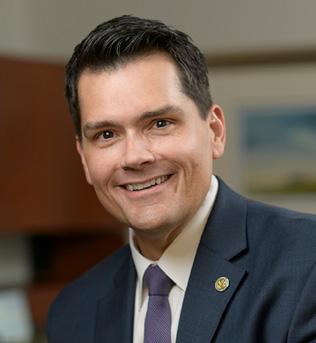
During the course of the project, he asked MSK executives to think differently about shared services, including:
` The areas being centralized or integrated.
` How the teams align and how to ensure a comprehensive change management approach.
` How the teams demonstrate value and support business development.
` Development of succession plans and career paths that will drive personal and professional growth opportunities throughout the organization.
“It hadn’t really existed in the organization before. We used to run a lot of these things vertically resulting in
redundancies, but there was an institutional push to codify shared services,” Koford explained. “It drives efficiency, standardization, and team mobility across all areas.”
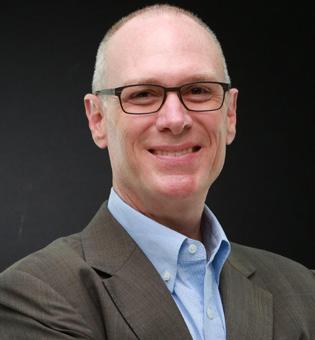 Aaron Tappan
Kreg Koford
Jamie Green
Lisa Lieberman
Aaron Tappan
Kreg Koford
Jamie Green
Lisa Lieberman




More than 70% of admitted patients need peripheral IV catheters.1 Catheter securement is essential to help prevent motion-related IV complications.
More than 70% of admitted patients need peripheral IV catheters.1 Catheter securement is essential to help prevent motion-related IV complications.
More than 70% of admitted patients need peripheral IV catheters.1 Catheter securement is essential to help prevent motion-related IV complications.
B. Braun Medical’s Clik-FIX catheter securement devices are designed with patient care in mind. Made with a cushioning foam base, Clik-FIX is designed to maximize patient comfort and help reduce the risk of pressure injuries from the catheter hub.
B. Braun Medical’s Clik-FIX catheter securement devices are designed with patient care in mind. Made with a cushioning foam base, Clik-FIX is designed to maximize patient comfort and help reduce the risk of pressure injuries from the catheter hub.
B. Braun Medical’s Clik-FIX catheter securement devices are designed with patient care in mind. Made with a cushioning foam base, Clik-FIX is designed to maximize patient comfort and help reduce the risk of pressure injuries from the catheter hub.
More than 70% of admitted patients need peripheral IV catheters.1 Catheter securement is essential to help prevent motion-related IV complications.
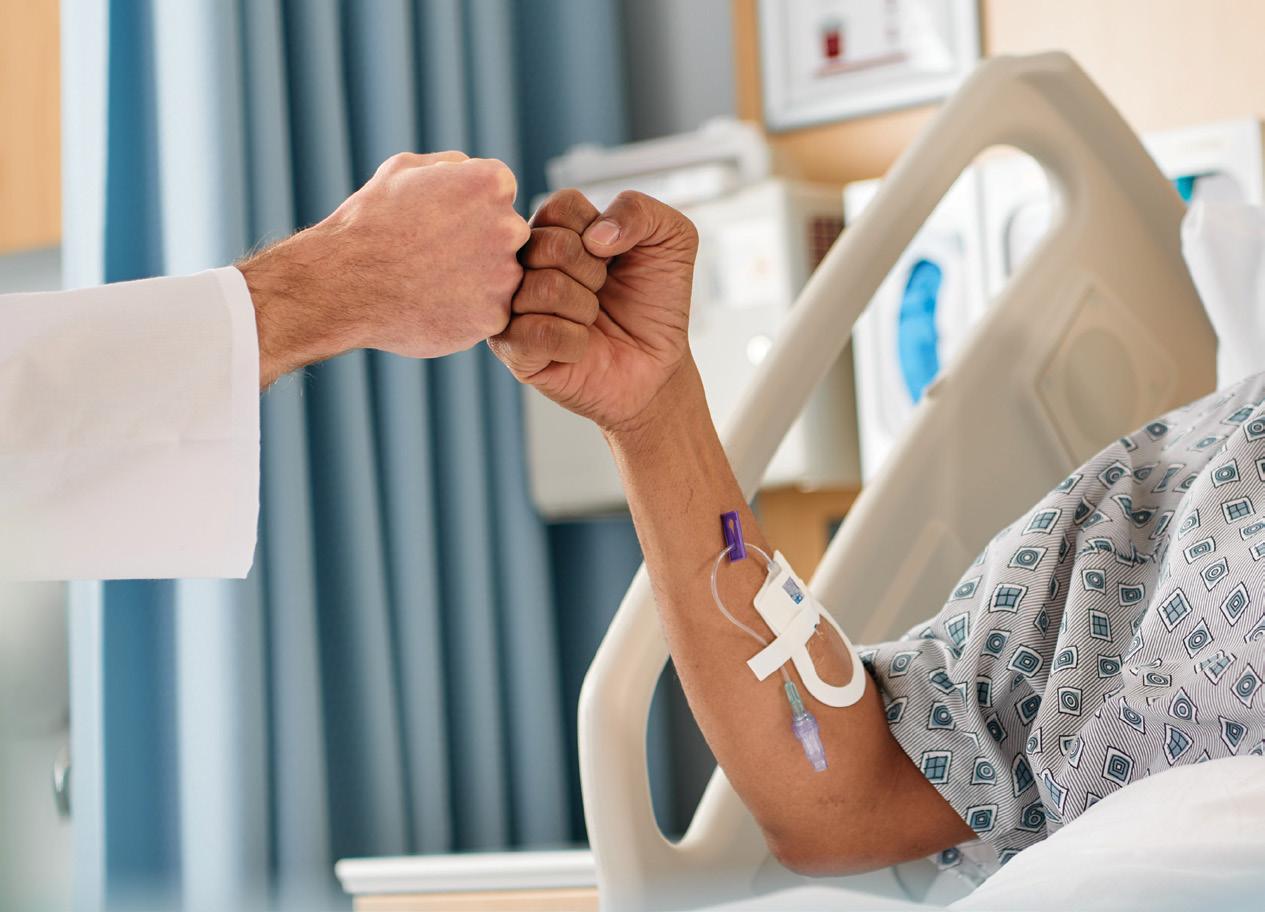
To learn more about B. Braun Medical’s full line of Catheter Securement Devices, visit bbraunusa.com/clikfix.
To learn more about B. Braun Medical’s full line of Catheter Securement Devices, visit bbraunusa.com/clikfix.
To learn more about B. Braun Medical’s full line of Catheter Securement Devices, visit bbraunusa.com/clikfix.
B. Braun Medical’s Clik-FIX catheter securement devices are designed with patient care in mind. Made with a cushioning foam base, Clik-FIX is designed to maximize patient comfort and help reduce the risk of pressure injuries from the catheter hub.
To learn more about B. Braun Medical’s full line of Catheter Securement Devices, visit bbraunusa.com/clikfix.
PCS-1011B
Peripheral
PCS-1011B Peripheral
WCS-1000B PICC/Central
Soft PICC/Central (also available for Neonates)
WCS-1006B Soft PICC/Central (also available for Neonates)
WCS-1000B PICC/Central WCS-1006B Soft PICC/Central (also available for Neonates)
MSK’s fight against cancer and its specialized pharmaceutical supply chain MSK’s fight against cancer is highly dependent on specialized drugs. Koford estimates close to 95% of its pharmaceutical portfolio is sole source, or drugs that don’t have alternatives. “Because of that, we work very closely with our distributors and manufacturers to understand the market and what’s going on,” he said. “Then, we make sure we secure the right products and understand the supply chain and availability through the supply chain.”
The cancer center offers unique treatments from a pharmaceutical perspective, and MSK must ensure it can access drugs like ones used in investigational drug services, because it runs over 900 investigational studies per year. Chemotherapeutic treatments and oncology medications drive the high cost of pharmaceutical supply chains for cancer centers, but the total pharmaceutical supply cost is negotiated between IDNs, GPOs, suppliers, and payer reimbursement rates.
“Our informatics team is helping design the inventory management processes for pharmacy and trying to manage a point of distribution all the way up to our suppliers to really understand those complexities,” he said. “Similar to other organizations, we have to know what the manufacturers are doing and about the disruptions in the industry, and then respond and be creative. Our doctors are doing that.”
Dr. Selwyn M. Vickers arrived in September 2022 as the new President and CEO of MSK. An internationally recognized pancreatic cancer surgeon, researcher and pioneer in health disparities, Dr. Vickers most recently
served as CEO of the UAB Health System and CEO of the UAB/Ascension St. Vincent’s Alliance, while retaining his role as dean of the UAB Heersink School of Medicine.
“He’s been very supportive of the organizational change and alignment with supply chain,” Koford said. “We’ve also redesigned our direct report structure, and I have a direct line to the chief administrative officer and one to the president for accountability to make sure we’re delivering our services.”
Koford and the Supply Chain team collaborate with MSK executive leadership across the organization to ensure alignment and prioritization. Patient care is a top priority at MSK, and this collaborative approach gives supply chain credibility and support throughout the organization in its alignment with nursing staff in decision making.
“We continue to build on those capabilities to help the clinicians work at the top of their license and help bring them the information and opportunities around clinical product decision and potentially switching or saving costs,” Koford said.
Koford is reviewing designs for a consolidated service center (CSC) to help optimize MSK’s physician cycles and to serve its ambulatory surgery sites.
“We’re in the process of vetting it out,” he said. “But that activity would move outside of the city. The circumstances in which we work are hyperdense in Manhattan. So, when we think of our network, we think about transportation, logistics, routes and all of those things that Aaron (Tappan) and his team have been trying to analyze and optimize.”
Koford says they’re working on inventory levels, technology integration, and automation in their replenishment system.
“All of those have work streams and will be rolled out as a big project over the next 18 months,” he said. “Our central lab is a six-story building that has embedded materials management and we’ve brought in an ASC that’s down the street. It’s a staged approach to bring all of these groups into reporting to one central entity.”
Tappan’s team expertise in materials management, logistics, and dock management lends it credibility and it’s a part of the steering committees created by MSK. These support identifying opportunities for efficiency, technological advancement, process simplification and simply reducing the number of trucks coming into the Upper East Side of Manhattan.
According to Koford, MSK has set a target of $100 million in diversity spend over the next five years. “We’re about a third of the way there today before we fully roll out this program,” he said. “There’s a tremendous amount of opportunity to connect with our community and help our suppliers better reflect our patients, while providing opportunities for growing and investing in these businesses.”
Koford says there’s huge support for it within the organization. MSK is dedicated to equality, diversity, and inclusion. It has pledged an institutional commitment to become a more inclusive and diverse institution, and it believes this is fundamental to driving innovation and to achieving its mission of saving and extending lives. Building a diverse and inclusive culture is essential to providing high-quality care to all of its patients.
“Our next phase of the supplier diversity program was recently pitched to our senior leadership team,” Koford said. “We think it will yield a lot of opportunities.”







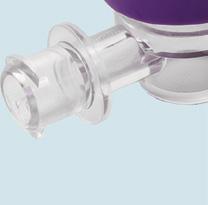




































clinical integration occurs when healthcare systems engage clinicians in choosing and committing to certain suppliers –leading to improved quality control, efficiency and cost savings.
Healthcare providers nationwide continue to face a host of financial headwinds such as ongoing supply chain disruptions, staffing shortages and inflation. The unparalleled challenges while caring for millions of COVID-19 patients have only fueled these substantial increased costs required to care for patients – putting hospital’s financial steadiness at risk. According to a recent report from Kaufman Hall, the median operating margin for hospitals was 0% in April, leaving hospitals with little to no financial flexibility. While many hospitals and health systems are taking steps to identify opportunities for savings, many are also under the impression that they have run out of options.
A strong value analysis program will ensure a healthcare system’s stakeholders, including clinicians, are working in lockstep to achieve their goals and objectives, but this can only be accomplished with the right governance and structure in place. HealthTrust leverages its operational expertise to build this structure with clearly defined roles and responsibilities so a value analysis program can be advanced or adopted across an organization. From there, HealthTrust helps teams make optimal decisions around cost effective products while assuring that hospitals never compromise on care.
Value analysis is a comprehensive solution for hospitals to combat these challenges as it identifies the right places to look for cost savings through evidence-based, standardized, and qualitative practices. A value analysis program reviews the quality, utilization, and overall cost of a product, practice, or procedure across categories. This guarantees that the organization delivers the best patient care while also creating value for the hospital or health system. However, hospitals need collaborative input from across their organization and
external partnerships to achieve their program goals and objectives.
A successful value analysis program should mitigate supply expense growth, accelerate and drive value, standardize operating models and processes, and enhance clinician and patient experiences – but these goals are more seamlessly accomplished when there is clinical integration across a supply chain process. This
HealthTrust takes a holistic approach to the value analysis process and offers more than just a playbook for execution. From start to finish, HealthTrust partners with hospitals and health systems to cross challenges they face by using its operational expertise, contract familiarity and strong network, which helps leaders effectively develop strategies for supplies and foresee shortages or barriers.
Want to begin a value analysis program at your facility? Reach out to our Advisory Services team at solutions@healthtrustpg.com to get started.



Futuro Health’s education to career programs address industry’s allied health workforce shortages.
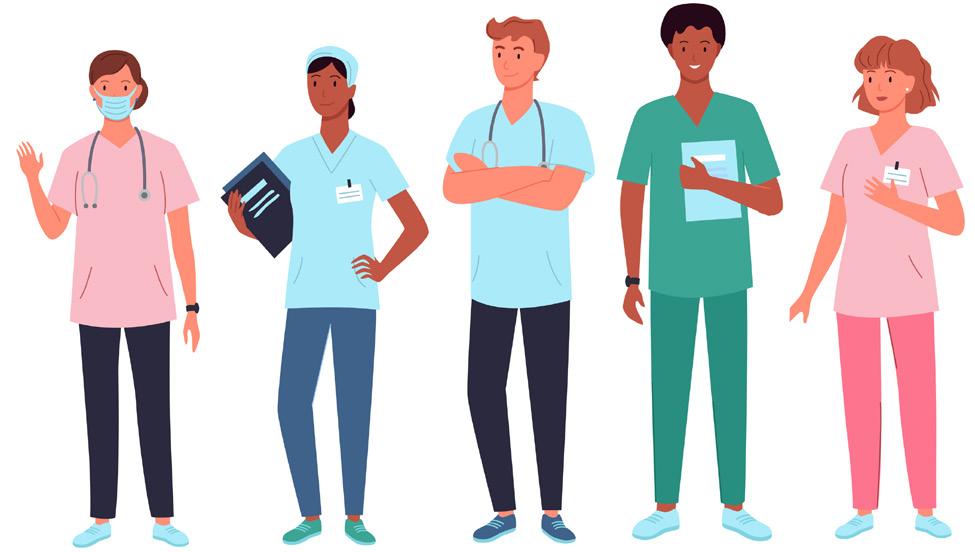 BY JENNA HUGHES
BY JENNA HUGHES
The healthcare worker shortage continues to cause employment gaps across the medical industry. Eighty-five percent of healthcare facilities are facing allied staff shortages, according to a recent report published by AMN Healthcare. Many positions in healthcare remain vacant, leaving health systems searching to fill innumerable entrylevel to advanced medical roles. Now more than ever, there are abundant opportunities available for individuals interested in beginning a career in the healthcare industry. According to Futuro Health, a California-based non-profit organization focused on improving the health and wealth of communities, 2.3 million additional healthcare workers will be needed to fill vacant positions in the United States by 2025.
Yet, for adults managing jobs and daily family responsibilities, the thought of returning to school to earn a credential can be daunting. The rising cost of tuition is also a barrier for many individuals who wish to pursue additional education to enter the healthcare field.
Since Futuro Health’s inception in 2020, thanks to initial community benefits

In today’s reality of high vendor backorders, working with Dukal can ensure you have what you need, when you need it.
Well before congested ports began to snarl supply chains, Dukal has been committed to providing the highest level of transparency and trust to ensure our products are available to meet the everyday demands of today’s healthcare professionals.

funding from Kaiser Permanente, over 5,000 diverse adults will have completed their education journey with no debt and gained the interpersonal and technical training valued by healthcare providers. With 90% ethnic diversity and over 50% linguistic diversity, Futuro Health Scholars bring cultural competence and lived experiences, which are crucial for improving health outcomes and promoting equity. Furthermore, graduates come with demonstrated ability to thrive in a digital/hybrid environment, which are important skillsets as the deployment of digital health and virtual care become increasingly common.
Futuro Health delivers education programs that prepare individuals for careers in allied health positions. The mission of the nonprofit organization is to bridge the national healthcare workforce gap by continuing to grow a network of educated and qualified health professionals. The organization makes the path into allied health careers more accessible by creating adaptable and affordable healthcare education opportunities. Futuro Health’s workforce solutions are designed to scale efficiency, a unique combination of data and technology platform, enrollment portal, healthcare curriculum expertise, education provider ecosystem, dedicated success coaches, and “Human Touch Healthcare” coursework, to begin addressing the provider’s talent acquisition and retention challenges.
Van Ton-Quinlivan, chief executive officer of Futuro Health, formerly the executive vice chancellor of California Community Colleges, now oversees the process of connecting diverse adults to education programs leading to healthcare careers. Ton-Quinlivan was named a White House Champion of Change under
the Obama Administration in recognition of her career in education and is an appointee to the State of California Governor Newsom’s Health Workforce and Education Training Council.
“Workforce development is a team, not an individual, sport. Employers do not need to tackle workforce challenges on their own,” said Ton-Quinlivan. “Day to day, I am inspired by the ability to connect individuals from diverse communities to good opportunities in allied health careers and the importance of decent educational pathways made available as a way for students in the healthcare field to have economic mobility.”
All Futuro Health education journeys prepare individuals with the skills and qualifications they need to perform in healthcare-related jobs. Learners are empowered with interpersonal and technical skills for careers in allied health positions during their education journeys as a Futuro Health Scholar. Additionally, they receive technical education from a curated selection of programs approved by Futuro Health’s team of experts in curriculum development.
Futuro Health’s technical training offerings range from patient-facing clinical roles to behavioral health and health informatics (IT) programs of study. Individuals can access careers such as medical assistants,
Any solution built for scale to healthcare worker shortages will require more than incremental steps; a combination of best practice tactics and stakeholders is necessary. According to Ton-Quinlivan, addressing the healthcare worker shortage requires an “ecosystem” approach. “We call it ecosystem engineering,” she explains. “No one education provider can provide the needed variety in occupational training. But, because we’ve engineered an ecosystem of providers, we’ve created a robust solution for employers built to scale,” said Ton-Quinlivan.
phlebotomists, patient care representatives, pharmacy techs, surgical techs, sterile processing technicians, healthcare data analysts, peer support specialists, community health workers with behavioral health emphasis, and many more. Futuro Health now has over 20 approved training offerings across 65 education partner campuses.
As a best practice, Ton-Quinlivan encourages employers to pool their openings. “The reason why employers need to form a consortium and aggregate their jobs is to match their hiring processes with the volume in which education produces students,” according to Ton-Quinlivan.
Futuro Health delivers education programs that prepare individuals for careers in allied health positions. The mission of the nonprofit organization is to bridge the national healthcare workforce gap by continuing to grow a network of educated and qualified health professionals.
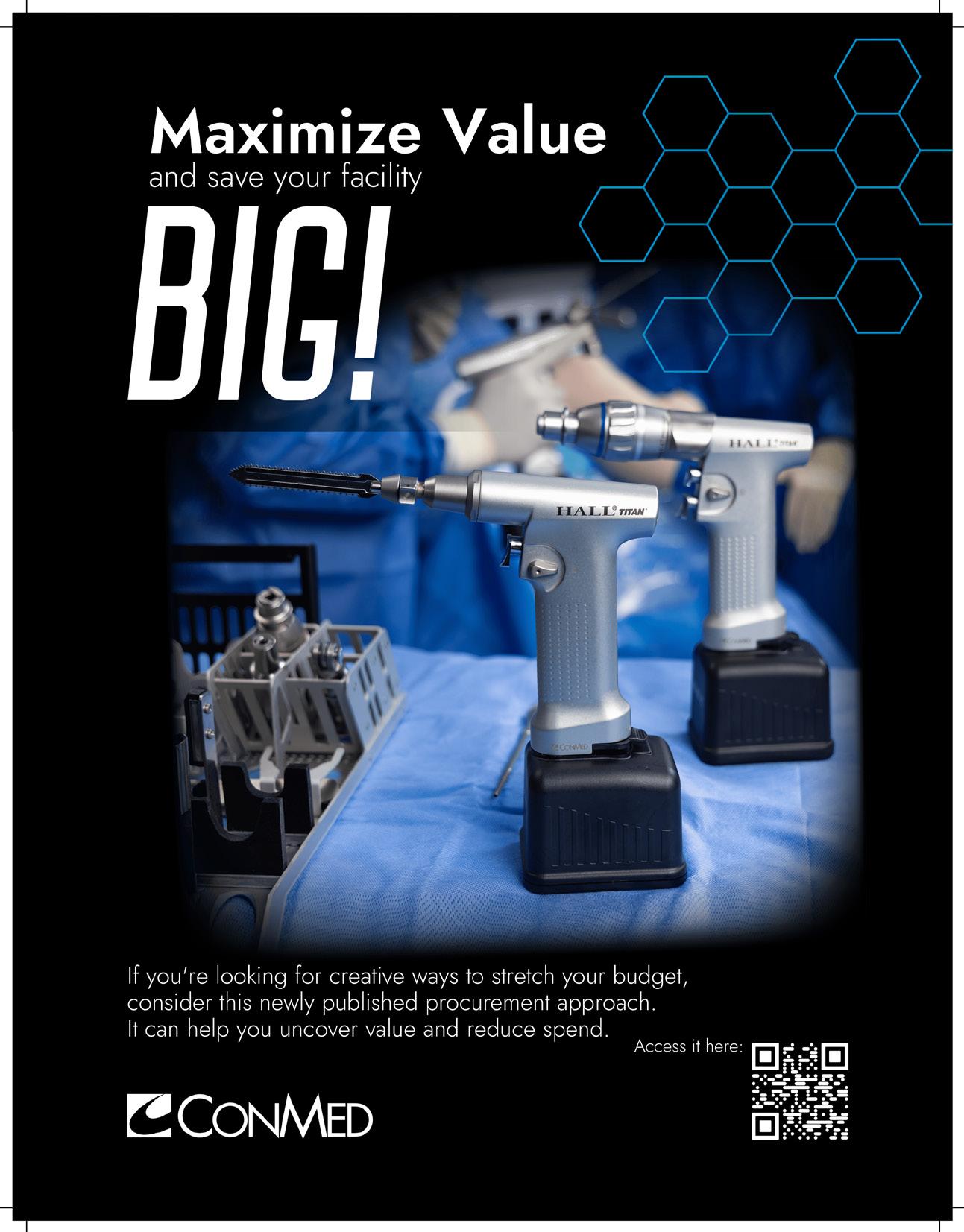
Futuro Health’s health education programs focus heavily on current medical practices to ensure the development of a thoroughly prepared and stable workforce. The organization consults employers on open employment opportunities and tailors each educational program based on industry needs.
Generous tuition scholarships provided through Futuro Health encourage students from diverse backgrounds to pursue a degree. Many participants are able to attend programs tuition-free, which removes the burden of educationrelated debt in making the decision to pursue a degree.
in a federal grant called the California Consortium for Public Health Informatics and Technology (CCPHIT). CCPHIT “aims to increase representation of underrepresented communities and will educate 700 adults for careers within the public health IT workforce by 2024.”
“The rule of thumb in workforce development is that you collaborate to create a talent pool and then you complete at the point of hiring. To successfully grow the talent pool, the three entities of employers, educators, and community organizations must come together doing what they do best,” according to Ton-Quinlivan.
Futuro Health pre-arranges programs and enrolls learners in all elements of a
to allow individuals the opportunity at any point in their career to advance and grow in healthcare. Numerous students who have been through the program have been able to return to school while raising a family, while managing student debt from previous degrees and education, and while employed. The programs have the potential to jumpstart individuals into new health careers, introduce them to a career in the healthcare industry, and increase earning potential, among many more impacts.
For Alicia, Futuro Health Medical Assistant Scholar Graduate, going back to school seemed daunting, as she was paying off student loans, pregnant with her first child, and working full time. She had always wanted to pursue a career in the medical field. Upon becoming a Futuro Health Scholar, she went back to school and found employment at Kaiser Permanente. According to Alicia, “Futuro Health helped me to secure my dream and my passion when I happened to go into debt.”
In California, Kaiser Permanente, Dignity Health, Sutter Health, Lucile Packard Children’s Hospital at Stanford, and others underwrite scholarships and provide financial support so that learners from diverse backgrounds can receive an education and begin a career in healthcare through Futuro Health.
To further educational opportunities and continue to address workforce shortages, Futuro Health partners with public higher education institutions and health systems including the University of California, Berkeley, California State Universities, community colleges, and employers. Futuro Health is also a partner
healthcare education journey so that adults can focus on their career first and foremost.
“It is not an easy task for adults to go back to school. So, part of what we do is build students’ confidence so that they can get back into their studies, whether it be in-person or a hybrid-online format, and just show them that they can manage their family and have time to study,” according to Ton-Quinlivan. “There’s a lot of work done to build their confidence to go back to school.”
The Futuro Health programs offer flexibility within a participants’ coursework
Another student, Damien, Futuro Health Scholar Graduate, learned about all the different types of career trajectories within IT in the medical field. Damien, through the Health IT Specialist Program, discovered a newfound passion for healthcare informatics and successfully transitioned away from his prior industry, where he was laid off during the pandemic.
“We’re inviting other states and employers to contact us so that we are able to bring education and healthcare workforce staffing solutions to other regions in the U.S. We are actively seeking employer partners if they have a volume of externships or open jobs, then they are part of the solution,” said Ton-Quinlivan.
Futuro Health pre-arranges programs and enrolls learners in all elements of a healthcare education journey so that adults can focus on their career first and foremost.








Ventyv® is the premier U.S. brand from Sri Trang, a top 4 global glove company. We are one of the few manufacturer brands directly supplied to the U.S. Our gloves are always manufactured in the same facilities, under the same stringent quality control, ensuring a consitent fit, quality and an easy expeirence. The Ventyv® brand by Sri Trang is a full lineup of latex and nitrile exam gloves featuring friendly animals and our full lineup of latex and nitrile exam gloves to make choosing the right product to fit your needs easy!















For More Information Visit sritrangusa.com/jhc Hello@ventyv.com Call 1-844-784-5683





levels of the most in demand products in its distribution centers. This step enables customers to remain confident that their most utilized products are available when they need them.
The topic of supply assurance took center stage during and immediately after the height of the pandemic. Prior to 2020, supply chain challenges were rarely in the consumer spotlight. When personal protective equipment became scarce, supply chain conversations dominated the world.
The healthcare industry was at the center of the supply chain storm. Unfortunately, even after the pandemic essentially ended, manufacturers couldn’t produce the volume of products needed and distributors developed novel and creative solutions to meet their customers’ needs despite the limitations they encountered.
Laboratory and purchasing employees at healthcare facilities were presented with various options and new programs that sustained them so laboratory procedures and testing could continue. Fisher Healthcare responded to the challenges by establishing a supply assurance program for its customers that remains a key part of its distribution strategy today.
“While we couldn’t solve all of the supply chain challenges we were facing, we had
the ability to put new processes in place so our customers could rely on us to meet their needs,” said Patrick Jones, president, Fisher Healthcare. “We relied on our relationships and our buying power to take care of our customers. Our solutions worked, and we continue to rely on them even though product availability has dramatically improved over the past several months.”
One of the primary ways customers’ needs are met is through a customer-oriented allocation process. Fisher Healthcare may offer alternative products when desired items aren’t readily available. The process also incorporates communication tools to inform customers of market changes and potential shortages.
A quick ship program for high turnover products is also effective in meeting customer and patient demand. Fisher Healthcare maintains high inventory
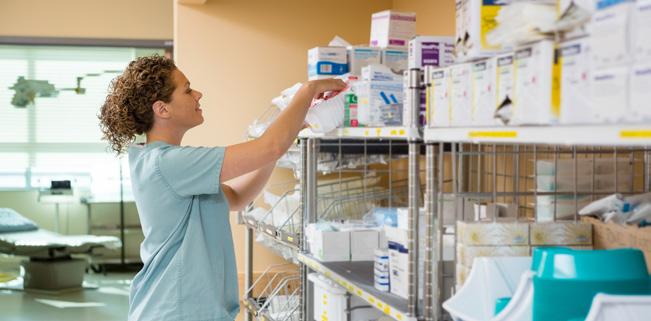
Laboratory professionals frequently express frustration with their own facilities when products arrive but aren’t quickly delivered to their department. Fisher Healthcare’s delivery solution can enable a more efficient internal supply chain process. A low unit of measure system enhances this feature by making it easier to store products where they are easily accessible to laboratory departments.
Laboratories that need additional assurances for products critical to their workflows can participate in a customer reserve inventory program. Volume commitments and time bound purchase orders make this an effective solution for laboratories that want extra certainty for their inventory.
“We are 100 percent lab and diagnostics focused so we can provide lab expertise that is unparalleled in this industry,” said Jones. “We know lab workflows and have dedicated resources who can quickly react to product shortages so our end customers can continue to care for their patients.”
The tremendous supply chain challenges the healthcare industry faced will most certainly be examined as case studies in the future. Distributors, such as Fisher Healthcare, who found solutions and continue to refine them are innovators. Their work will help our nation’s healthcare facilities be prepared and equipped for future public health disasters.
The Fisher Scientific Edge program has been expanded to include even more ready-to-ship products and is updated daily based on real-time inventory. Just look for the icon on our website to instantly identify items that are available for standard same-day shipping when ordered by 2 p.m.*
We offer same-day shipping on products in a variety of categories, including equipment and instruments, life sciences, safety, chemicals, lab essentials, and more.



Order any product marked with the icon before 2 p.m. in your time zone, and it leaves the warehouse the same day; orders placed after 2 p.m. ship the next business day.†
Look for the icon — which confirms a product’s availability‡ — in website search results. Filter on the icon under Special Interests to show only eligible products in your results.
By prioritizing the products that customers like you use the most, the Edge program lets you spend less time procuring and more time making progress.
Visit fisherhealthcare.com/edge to learn more and shop products.
*Exceptions may occur for orders placed very close to this deadline or those submitted via an eProcurement system. †For customers with designated shipping days, Edge program items will continue to ship on designated shipping days. ‡Due to inventory demand fluctuations, some Edge products may not be available for same-day-shipping at the time you add to cart. Please rely on the live inventory feature on fishersci.com to confirm availability.
Availability checks are still required on products not identified with an icon to confirm that they qualify for same-day shipping when ordered before 2 p.m. (To see if a product is in stock on our website, enter a quantity on the page for the item in question and click Check Availability after logging in or entering your ZIP Code.)

Group A streptococcus (GAS), also referred to as strep A, is a common bacterium. Many of us carry it in our throats and on our skin and it doesn’t always result in illness, according to the UK Health Security Agency. However, GAS does cause several infections, some mild and some more serious. Milder infections include scarlet fever, impetigo (red sores around the nose and mouth), cellulitis and pharyngitis (sore throat). These can be easily treated with antibiotics. The more serious – but rarer – infections linked to GAS come from invasive group A strep, known as iGAS. These infections are caused by the bacteria getting into parts of the body where it is not normally found, such as the lungs or bloodstream. In rare cases an iGAS infection can be fatal.
Forecasting how step A may affect patients – and healthcare providers – this respiratory season.
Here are three things to know about Strep A diagnostics during this year’s back-to-school season. First, although group A strep infections can occur any time of year, they are more common in the United States in winter and spring. Second, while it’s true anyone can contract a GAS infection, children between the ages of 5 and 15 years are most susceptible. And third, based on preliminary 2022–2023 data from the Centers for Disease Control and Prevention, less severe group A strep infections in children have returned to levels similar to or higher than those seen in pre-pandemic years.

GAS is spread by close contact with an infected person and can be passed on through coughs and sneezes or from a wound. Some people can have the bacteria present in their body without feeling unwell or showing any symptoms of infections, and while they can pass it on, the risk of spread is much greater when a person is unwell.
The CDC doesn’t track non-invasive group A strep, but estimates that pharyngitis causes an estimated 5.2 million outpatient visits and 2.8 million antibiotic prescriptions annually among U.S. persons aged 0–64 years. Globally, the burden from GAS infections is even greater. The World Health Organization estimates 111 million children in the developing world have impetigo and 470,000 new cases of acute rheumatic fever (a potential outgrowth of GAS) occur each year.
Currently, GAS is not resistant to penicillin and amoxicillin, first-line antibiotics for strep throat, sa7s CDC.
Gain peace of mind this respiratory season with a secure, identified level of inventory through our Reserved Inventory Program.
We’ll help ensure you have the diagnostic testing products you prefer, when you need them, despite fluctuating and unpredictable levels of respiratory illness. To



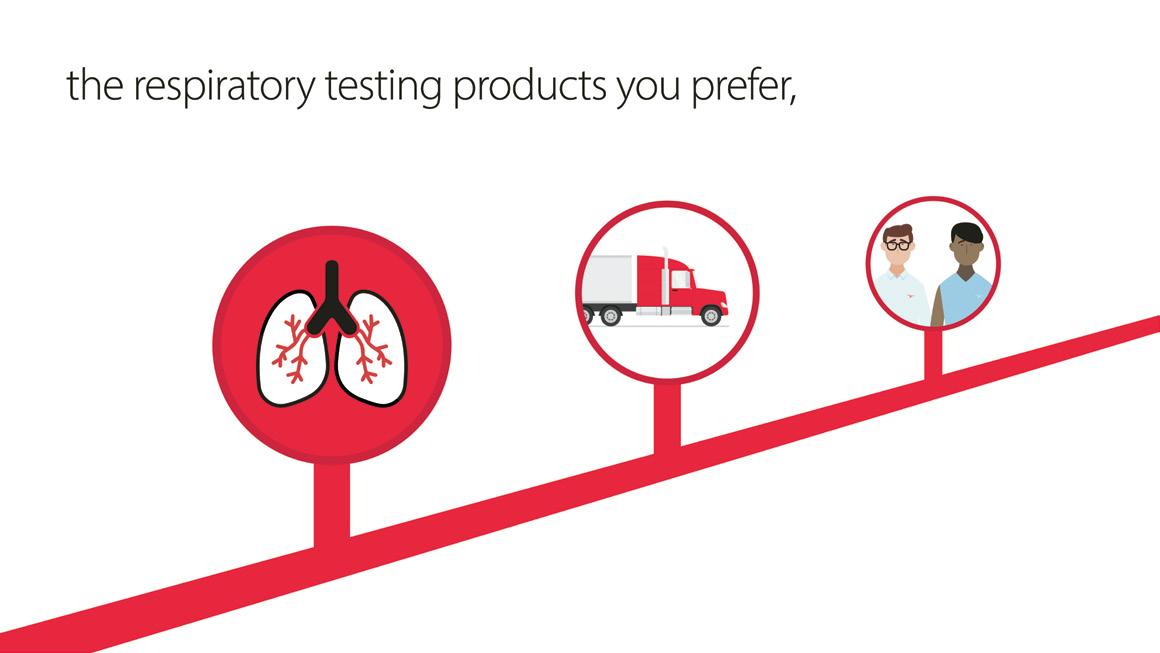

“Many viral syndromes can present similar to strep, however, clinicians and pediatricians look for specific signs (e.g., sore throat without cough, palatial petechiae, sandpaper rash), which help determine which diagnosis scores higher on differentials,” says Aparna Ahuja, M.D., divisional vice president of medical, clinical and scientific affairs for Abbott’s rapid diagnostics business. “There is some overlap of symptoms, including fever, sore throat, nausea and vomiting, but absence of cough is one of the key distinguishers for strep compared to viral infections like COVID and flu. In the eventuality of a misdiagnosis and not prescribing the right treatment for strep pharyngitis cases, further spread of infection along with worsening of symptoms/progression is a possibility.”

The usage of rapid point-of-care (POC) tests is increasing, says Dr. Ahuja, adding that she is speaking about strep A pharyngitis and scarlet fever but not severe strep infections such as streptococcal toxic shock syndrome (TSS) or necrotizing fasciitis, which are not diagnosed with a rapid test or managed on an outpatient basis. “Most physicians prefer rapid tests, as results are known quickly and decision on further course of treatment can be made immediately, while the patient is still available to the doctor. For patients – in this case, often
children – there’s a desire to understand the cause of the illness and get appropriate treatment to enable quick recovery.”
Rapid molecular tests help to provide high-quality actionable results at the point of care, she says. During one visit, the cause of illness can be identified and targeted therapy initiated, which leads to a better patient outcome. “Additionally, having rapid results can help provide timely information so patients can isolate appropriately, which helps avoid spreading strep A infections to family members and the larger community. It leads to fewer missed days of school or work for individuals and their families, and helps
reduce antibiotic use in subjects who explicitly ask for a prescription.”
Because of molecular technology and performance, tests such as Abbott’s CLIA-waived ID NOW™ Strep A 2 test do not require any follow-up culture to confirm negative results, enabling clinicians to treat confidently at the point of care with early positive detection and often during a patient visit, says Dr. Ahuja. “This efficiency supports antimicrobial stewardship. Inappropriate prescription of antibiotics results in ineffective treatment, and may contribute to antimicrobial resistance, which is an increasing public health concern.”
The Centers for Disease Control and Prevention is looking into an increase in invasive group A strep (iGAS) infections among children in the United States. These infections are caused by the bacteria getting into parts of the body where it is not normally found, such as the lungs or bloodstream. Not to be confused with routine strep throat, iGAS infections include necrotizing fasciitis (a serious bacterial infection that destroys tissue under the skin), streptococcal toxic shock syndrome (a rare but serious bacterial infection which can develop quickly into low blood pressure, multiple organ failure and death), cellulitis with blood infection, and pneumonia.
CDC estimates that in the most recent five years, approximately 14,000 to 25,000 cases of invasive group A strep disease have occurred each year in the United States. Between 1,500 and 2,300 people die annually due to invasive group A strep disease.
While iGAS infections are still uncommon, the number of cases rose in 2022, particularly among children under 10, reports the UK Health Security Agency. It isn’t possible to say for certain what is causing higher case numbers, but it is likely a combination of factors, including increased social mixing compared to the previous years as well as increases in other respiratory viruses.
Per the U. S. Centers for Disease Control and Prevention, preliminary 2023 data indicate iGAS infections have remained high in children in some areas of the country even after respiratory viruses decreased in those areas. This is occurring during the time when group A strep infections are normally highest (December through April). Additionally, some areas of the country have also seen an increase in iGAS infections in adults, particularly those aged 65 years or older.



In the world of medical advancements, much attention is given to cuttingedge instruments and imaging technologies. However, it’s essential not to overlook the technology embedded within the very chairs or tables that hold patients during examinations and procedures. Patient comfort, sense of security, and various chair features all play a significant role in maneuverability, caregiver access, ergonomics, and overall practice safety, ultimately impacting patient outcomes. Recognizing this, MTI has emerged as a market leader, continually innovating exam and procedure room chairs to elevate the healthcare experience.
for one out of every five workplace injuries reported in the United States, with healthcare workers being four times more likely to experience work-related injuries compared to construction workers. Recognizing this issue, MTI has invested considerable time and effort in engineering ADA compliant chairs with low entry heights, streamlining patient transfers, which can help reduce the risk of patient falls and caregiver back injuries. These safety measures can not only help mitigate liability concerns but also enhance patient satisfaction and employee retention.
Over the past five years, MTI has introduced an impressive lineup of 11 nextgeneration chairs, solidifying its position as an industry leader. Their comprehensive range of fully-powered and programmable exam and procedure chairs are packed with features to assist specialists in achieving improved patient outcomes.
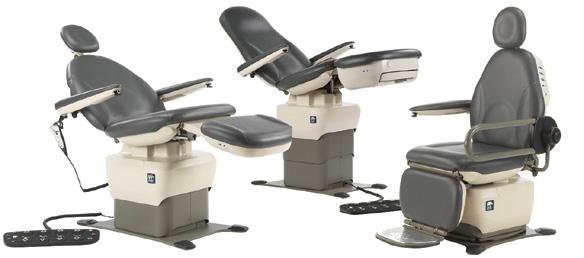
Understanding that each medical specialty focuses on specific areas of the anatomy and requires precise patient positioning, MTI has engaged specialists for over two decades, gathering valuable feedback and insights to shape their chair designs. By collaborating with ENTs, dermatologists, ophthalmologists, oral surgeons, podiatrists, and other specialists, MTI has crafted chairs that align seamlessly with their unique workflows.
The result is a collection of chairs and cabinets that feature multiple accessories, offering a customizable workspace to meet individual requirements.
One common concern expressed by specialists is the need for better access to patients’ head, neck, and shoulder areas. In response, MTI has incorporated tapered back sections into their next-generation chairs, making them thinner and facilitating easier caregiver access. This sleek design ensures that caregivers can treat patients without any hindrances, minimizing bending, straining, or stretching during procedures.
The safety of both patients and caregivers is paramount, as it significantly impacts the success of a practice. Shockingly, healthcare-related injuries account
In addition to addressing specialists’ specific requests, MTI has integrated reliable and modern innovations into their chairs. One such advancement is the integration of SmartTech™ technology, which harnesses the power of MTI’s Smart Controller™ and Smart Safety™ features. Through a centralized computer controller, this technology enhances safety, reduces energy consumption, provides smoother movement, and allows for additional memory options and personalized user preferences.
Exam and procedure chairs are more than mere tools; they are critical components that can directly impact patient outcomes in specialty care. When it comes to elevating the patient experience, facilitating caregiver workflows, and ensuring utmost safety, MTI’s commitment to innovation shines through. By combining advanced technology with design features tailored to specialists’ needs, MTI is revolutionizing specialized equipment for specialty healthcare.
I read The Journal of Healthcare Contracting because the articles are short and condensed, saving time but still giving me all the relative insight. The print vs online issue is preferred since most of the content I keep up with is online. It is nice not having to stare at monitor to get information. Reading what peers are doing is insightful and on most occasions the insight confirms what I believe is critical now and what longer term strategies may need developed.


 — Mark Welch, Senior Vice President, Novant Health
— Mark Welch, Senior Vice President, Novant Health

Across the nation, lack of reliable transportation is a barrier to accessing needed healthcare services.
BY JENNA HUGHESCities across the nation continue to expand and grow, developing past urban areas into the suburbs and beyond. As urban development expands, traveling farther distances is required to access needed goods and services. When availability and access of public transportation systems does not grow with cities, people do not receive the services they need. Without access to certain services like pharmacies and healthcare, health outcomes suffer.
According to a survey on healthcare access and transportation conducted by the Robert Wood Johnson Foundation, one in five adults without access to a vehicle or public transportation reported skipping necessary healthcare services.

Many communities nationwide face barriers to accessing healthcare services due to limited provider availability, geographic location, socioeconomic status, and lack of insurance. Increasingly, lack of transportation has been a cause of adults choosing to forgo needed healthcare.
Access to transportation in the United States is a social driver of health. Many individuals, especially in urban areas, rely on public transit as their main form of transportation. Without access to a vehicle or reliable public transportation systems, patients are often unable to travel to a doctor’s office and as a result, they do not receive critical health services.
The primary form of transportation in the United States is a vehicle. However, many individuals, such as those that live in urban areas, have low incomes, or rely on public transit, according to the Foundation. Public transit systems include trains, buses, subways, etc., and allow individuals to access portions of the city that are inaccessible on foot.
According to the Robert Wood Johnson Foundation, “Approximately 5% of nonelderly adults did not get needed healthcare in the past 12 months because of difficulty finding transportation, and

this experience was more common among adults with low family incomes (14%), adults with disabilities (17%), and adults without access to a vehicle (13%).” The survey found that there is a disproportionate impact among these groups, and adults who do not have health insurance, of not receiving healthcare due to difficulty finding transportation.
Delaying or going without health services is detrimental to an individual’s long-term health. According to the Robert Wood Johnson Foundation, “Adults without access to a vehicle who reported living in neighborhoods with fair or poor access to public transit were significantly more likely to forgo needed health care because of difficulty finding transportation (21%) compared with their counterparts reporting excellent, very good, or good neighborhood access to public transit (9%).”
Investments in public transit may be a key to promoting health equity.
Public transit accessibility is integral to improving health outcomes across the nation. The Robert Wood Johnson Foundation calls on policymakers, states, local governments, and other stakeholders to consider transportation barriers when making decisions regarding urban development.
As the number of outpatient clinics increase, instrument processing becomes a greater challenge. You may already understand the need for effective sterilization to reduce risk—but instrument processing is more than sterilization and it begins before you ever touch an instrument. Midmark instrument processing solutions were designed around CDC-recommended1 best practices to help make regulatory compliance to clinical standards as easy (and as automated) as possible.
Learn more at: midmark.com/5stepIPworkflow
1 https://www.cdc.gov/infectioncontrol/guidelines/disinfection/sterilization/sterilizing-practices.html

© 2023 Midmark Corporation, Versailles, Ohio USA

